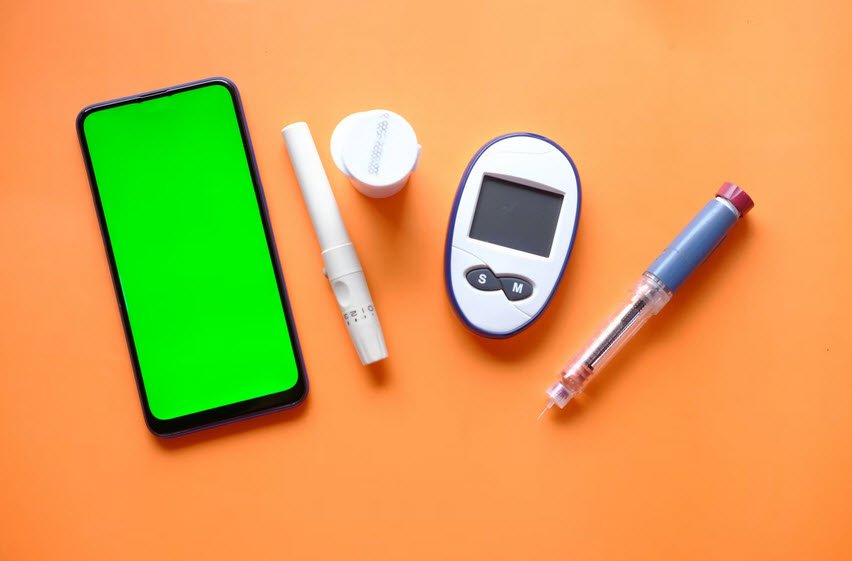
Diabetes is a major risk factor for heart disease and stroke. More than 65 percent of people who have diabetes die of some type of cardiovascular disease. Diabetic women are at especially high risk for dying of heart disease and stroke.
Today, about 14 million people in the United States have diagnosed diabetes. In addition, nearly 6 million people have this serious disease but don’t know it.
Also Read: Overweight and Obesity – Should You Choose To Lose?
The type of diabetes that most commonly develops in adulthood is type 2 diabetes. In type 2 diabetes, the pancreas makes insulin, but the body cannot use it properly and gradually loses the ability to produce it.
Type 2 diabetes is a serious disease. In addition to increasing the risk for heart disease, it is the #1 cause of kidney failure, blindness, and lower limb amputation in adults.
Diabetes can also lead to nerve damage and difficulties with fighting infection. While the risk of type 2 diabetes increases after age 45, the disease is on the rise among both children and adults. A major risk factor for type 2 diabetes is overweight, especially having extra weight around the waist.
Other risk factors include physical inactivity and a family history of diabetes. Type 2 diabetes also is more common among American Indians, Hispanic Americans, African Americans, Asian Americans, and Pacific Islanders.
Women who have had diabetes during pregnancy (gestational diabetes) or have given birth to a baby weighing more than 9 pounds are also more likely to develop type 2 diabetes later in life.
Symptoms of diabetes may include fatigue, nausea, frequent urination, unusual thirst, weight loss, blurred vision, frequent infections, and slow healing of sores.
But type 2 diabetes develops gradually and sometimes has no symptoms. Even if you have no symptoms of diabetes, if you are overweight and have any of the risk factors for type 2 diabetes, ask your doctor about getting tested for it. You have diabetes if your fasting blood glucose level is 126 mg/dL or higher.
If you have diabetes, controlling your blood glucose (blood sugar) levels will help to prevent complications. Because diabetes is so strongly linked with heart disease, managing diabetes must include keeping certain factors under control.
Recommended levels of blood pressure and blood cholesterol control are lower for people with diabetes than for most others. Not smoking, being physically active, and taking aspirin daily (if your doctor recommends it) also are important ways to prevent heart disease if you have diabetes.
Some people do not yet have diabetes, but are at high risk for developing the disease. More than 14 million Americans have a condition known as “prediabetes,” in which blood glucose levels are higher than normal but not yet in the diabetic range.
Prediabetes is defined as a fasting blood glucose level of 100–125 mg/dL. New research shows that many people with prediabetes can prevent or delay the development of diabetes by making modest changes in diet and level of physical activity.
People who are prediabetic also have a 50 percent greater chance of having a heart attack or stroke than those with normal blood glucose levels. If you are prediabetic, you’ll need to pay close attention to preventing or controlling high blood pressure, high blood cholesterol, and other risk factors for heart disease.
The ABCs of Diabetes Control
If you have diabetes, three key steps can help you lower your risk of heart attack and stroke. Follow these ABCs:
- A is for A1C test, which is short for hemoglobin A1C. This test measures your average blood glucose over the last 3 months. It lets you know if your blood glucose level is under control. Get this test at least twice a year. Number to aim for: below 7.
- B is for blood pressure. The higher your blood pressure, the harder your heart has to work. Get your blood pressure measured at every doctor’s visit. Numbers to aim for: below 130/80 mmHg.
- C is for cholesterol. LDL, or “bad” cholesterol, builds up and clogs your arteries. Get your LDL cholesterol tested at least once a year. Number to aim for: below 100 mg/dL. If you have both diabetes and heart disease, your doctor may advise you to aim for a lower target number, for example, less than 70.
Be sure to ask your doctor:
- What are my ABC numbers?
- What should my ABC target numbers be?
- What actions should I take to reach my ABC target numbers?
To lower your risk of heart attack and stroke, also take these steps:
- Be physically active every day.
- Follow your doctor’s advice about getting physical activity every day.
- Eat less salt and sodium, saturated fat, trans fat, and cholesterol.
- Eat more fiber. Choose fiber-rich whole grains, fruits, vegetables, and beans.
- Stay at a healthy weight.
- If you smoke, stop.
- Take medicines as prescribed.
- Ask your doctor about taking aspirin.
- Ask others to help you manage your diabetes.
Preventing Diabetes
If you have “prediabetes”—higher than normal glucose levels – you are more likely to develop type 2 diabetes. But you can take steps to improve your health, and delay or possibly prevent diabetes.
A recent study showed that many overweight, prediabetic people dramatically reduced their risk of developing diabetes by following a lower fat, lower calorie diet and getting 30 minutes of physical activity at least 5 days per week. The following are some encouraging results of the study:
- Overall, people who achieved a 5- to 7-percent weight loss (about 10 to 15 pounds) through diet and increased physical activity (usually brisk walking) reduced their risk of diabetes by
58 percent over the next 3 years. - For people over age 60, these lifestyle changes reduced the risk of developing diabetes by 71 percent.
- Benefits were seen in all of the racial and ethnic groups that participated in the study—White, African American, Hispanic, American Indian, Asian American, and Pacific Islanders.
- People taking the diabetes drug metformin (Glucophage) reduced their risk of developing the disease by 31 percent.
These findings suggest that you can act to prevent or delay diabetes, even if you are at high risk for the disease.








